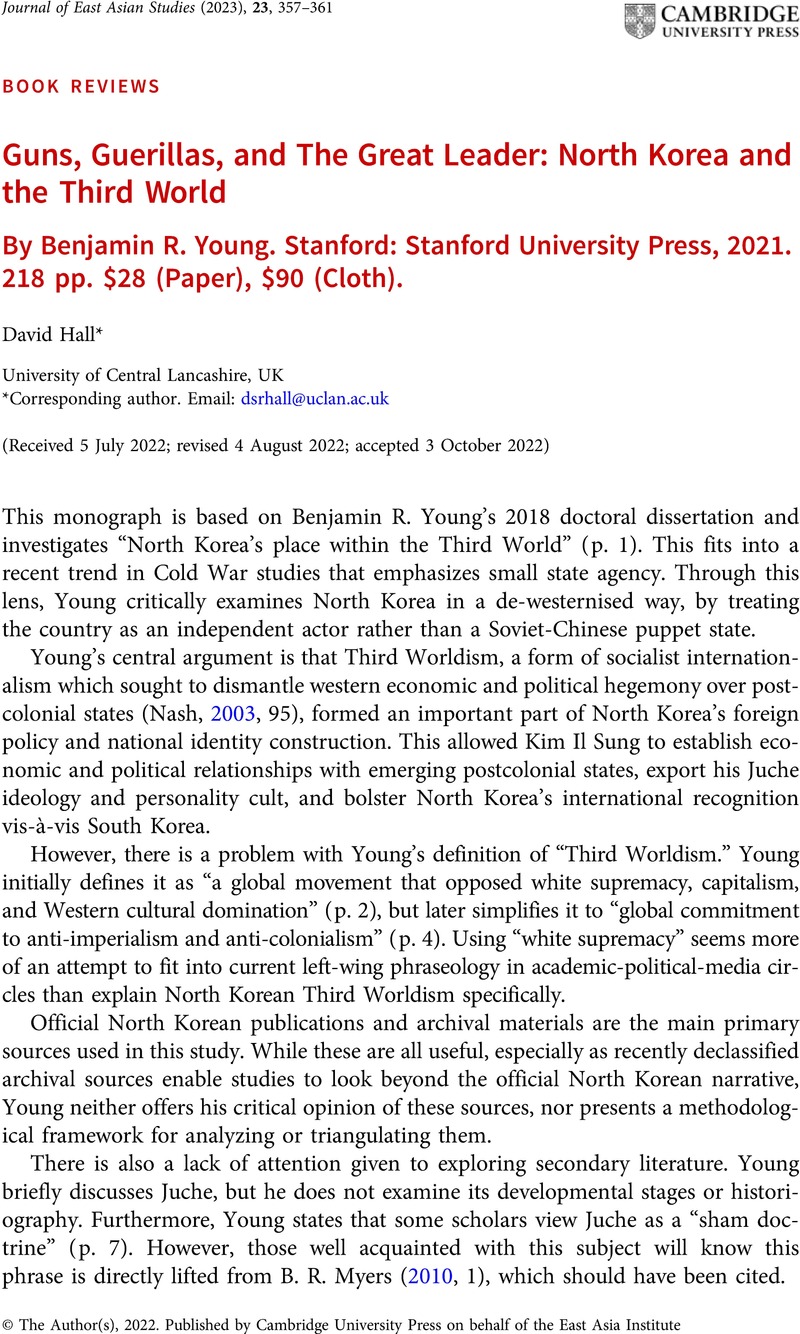No CrossRef data available.
Article contents
Guns, Guerillas, and The Great Leader: North Korea and the Third World By Benjamin R. Young. Stanford: Stanford University Press, 2021. 218 pp. $28 (Paper), $90 (Cloth).
Review products
Guns, Guerillas, and The Great Leader: North Korea and the Third World By Benjamin R. Young. Stanford: Stanford University Press, 2021. 218 pp. $28 (Paper), $90 (Cloth).
Published online by Cambridge University Press: 08 November 2022
Abstract
An abstract is not available for this content so a preview has been provided. Please use the Get access link above for information on how to access this content.

- Type
- Book Review
- Information
- Copyright
- Copyright © The Author(s), 2022. Published by Cambridge University Press on behalf of the East Asia Institute
References
CREST (CIA Records Search Tool). 1975. North Korean Payments Problem with the West. June 3. https://www.cia.gov/readingroom/document/cia-rdp86t00608r000600050021-9Google Scholar
CREST (CIA Records Search Tool). 1985. North Korea: Turnaround in Foreign Debt Management and Trade Patterns. February 1. https://www.cia.gov/readingroom/document/cia-rdp90t01298r000200160001-5Google Scholar
Myers, B. R. 2010. The Cleanest Race: How North Koreans see Themselves and why it Matters. Brooklyn: Melville House.Google Scholar



